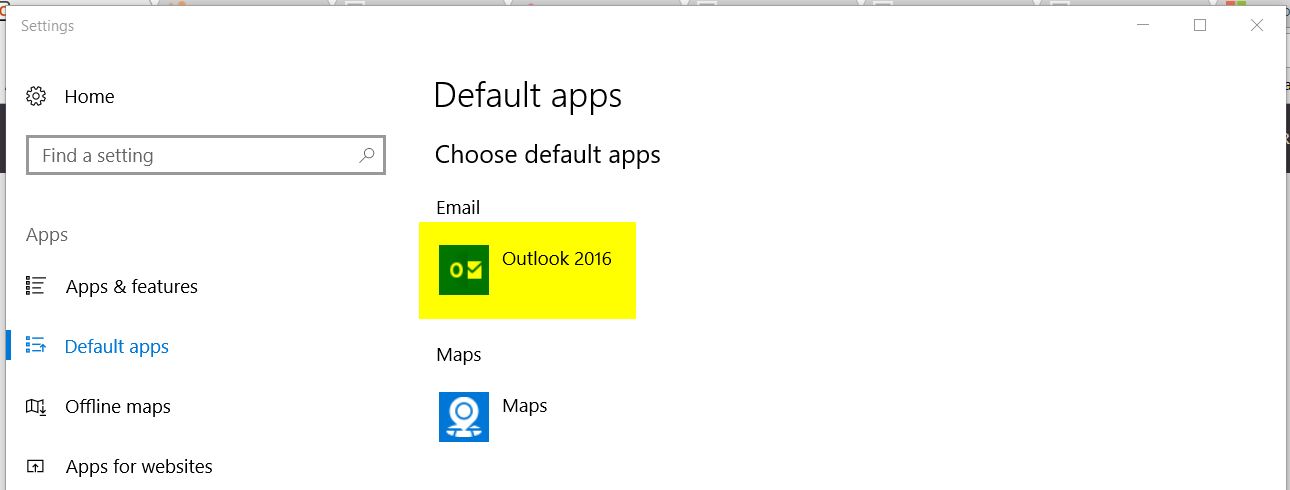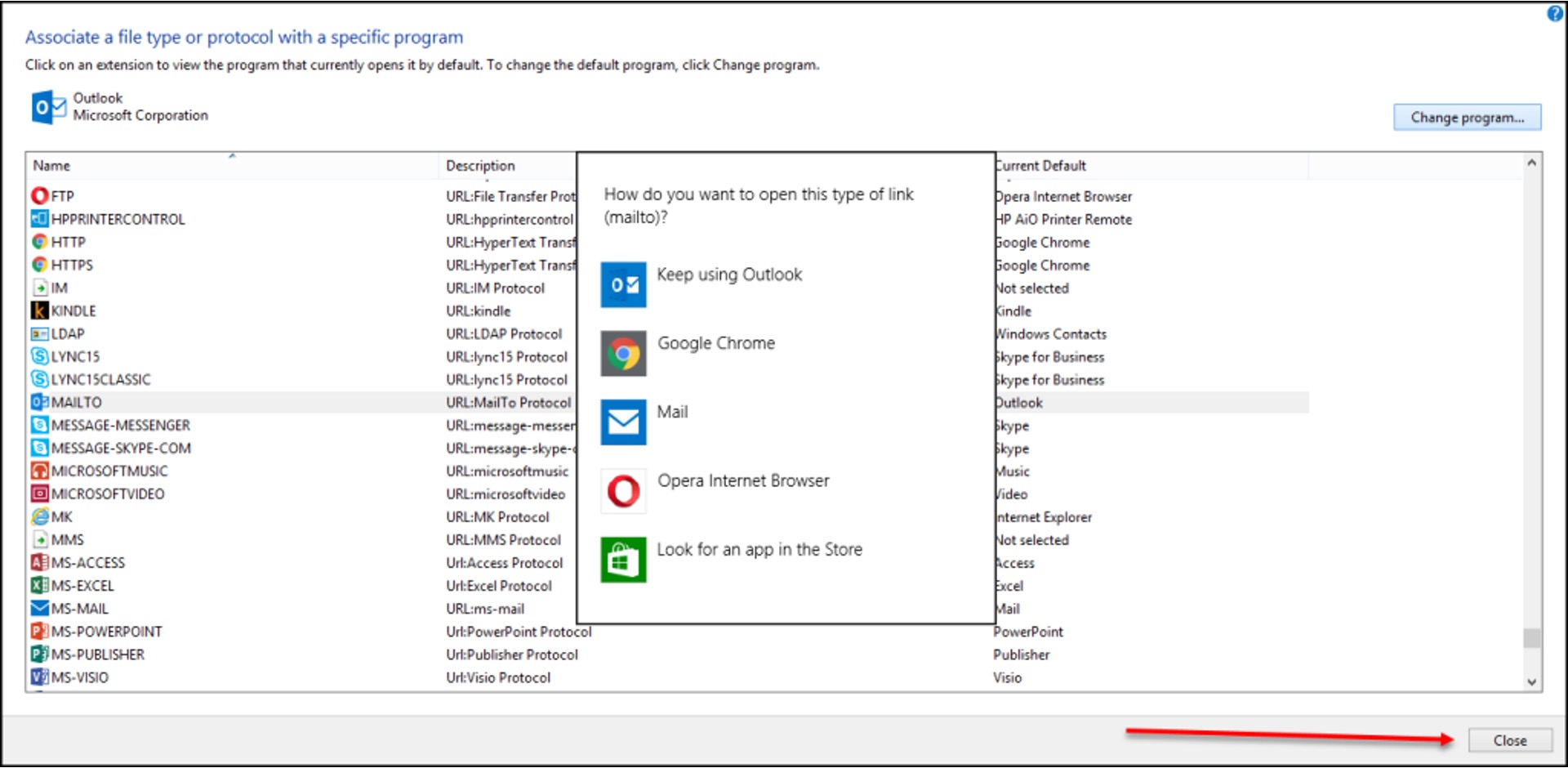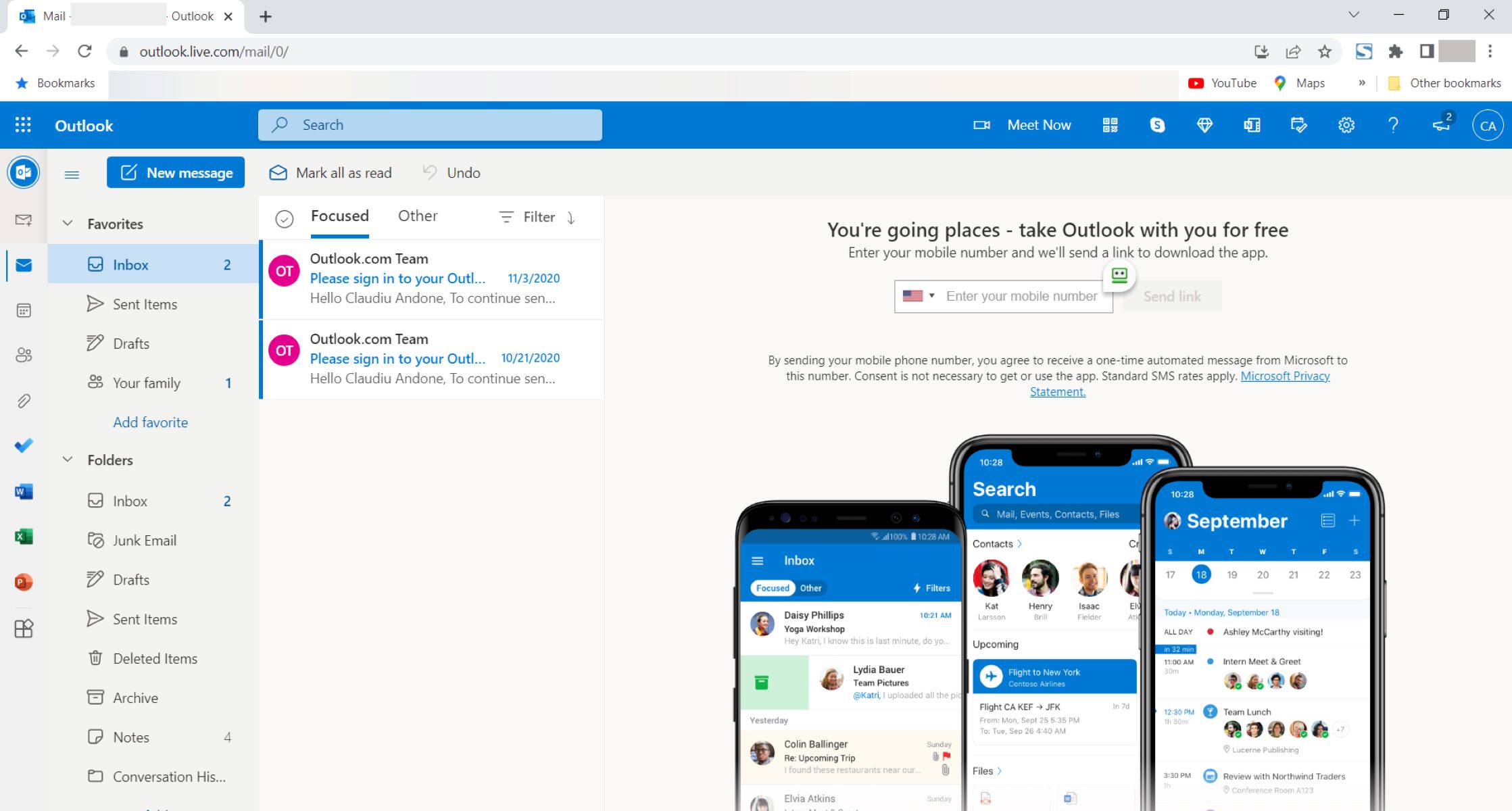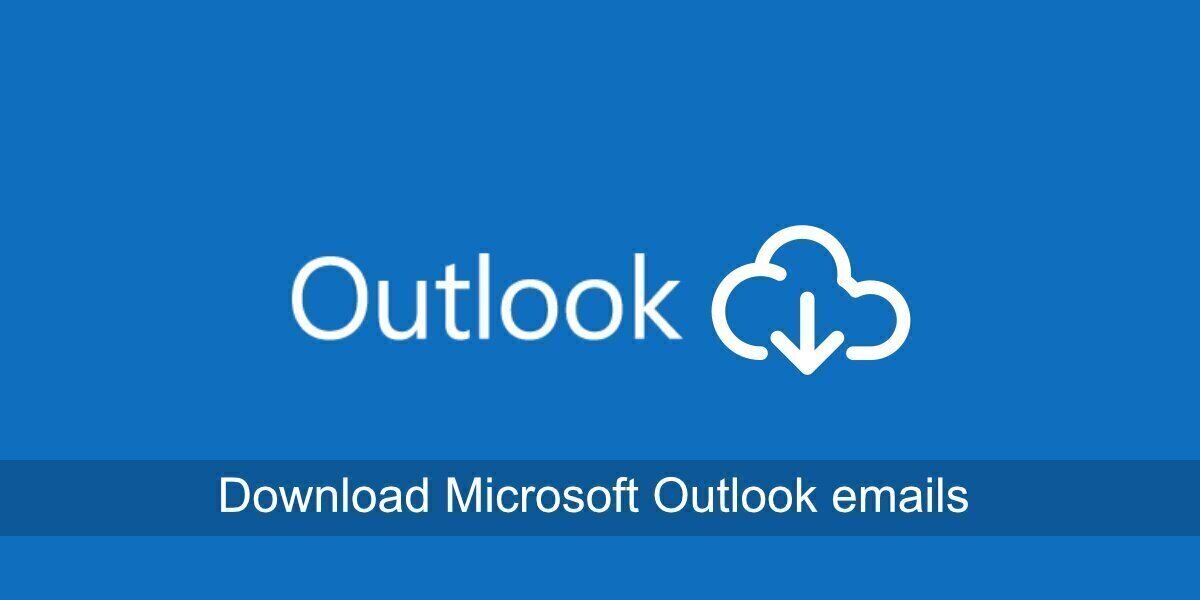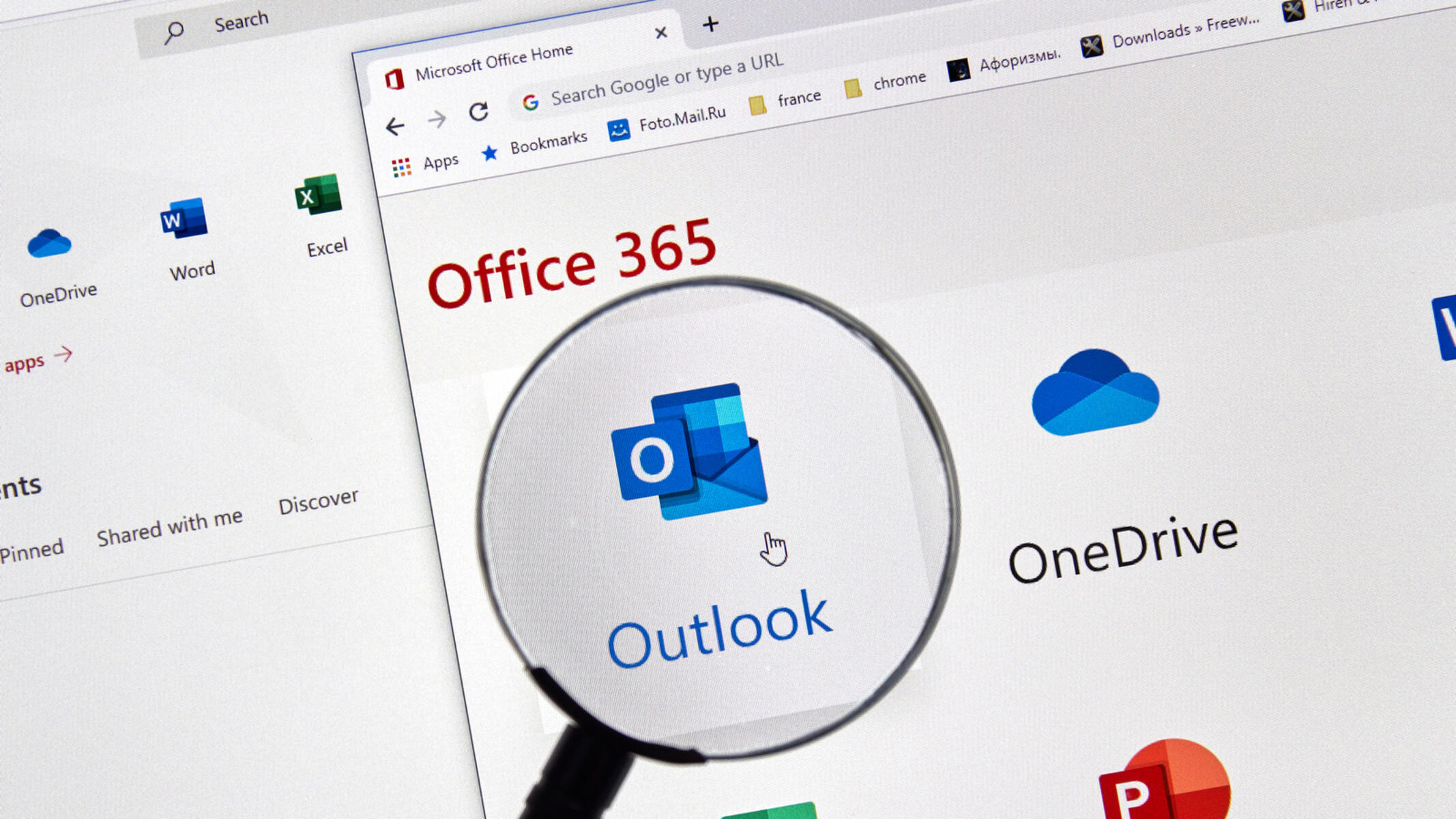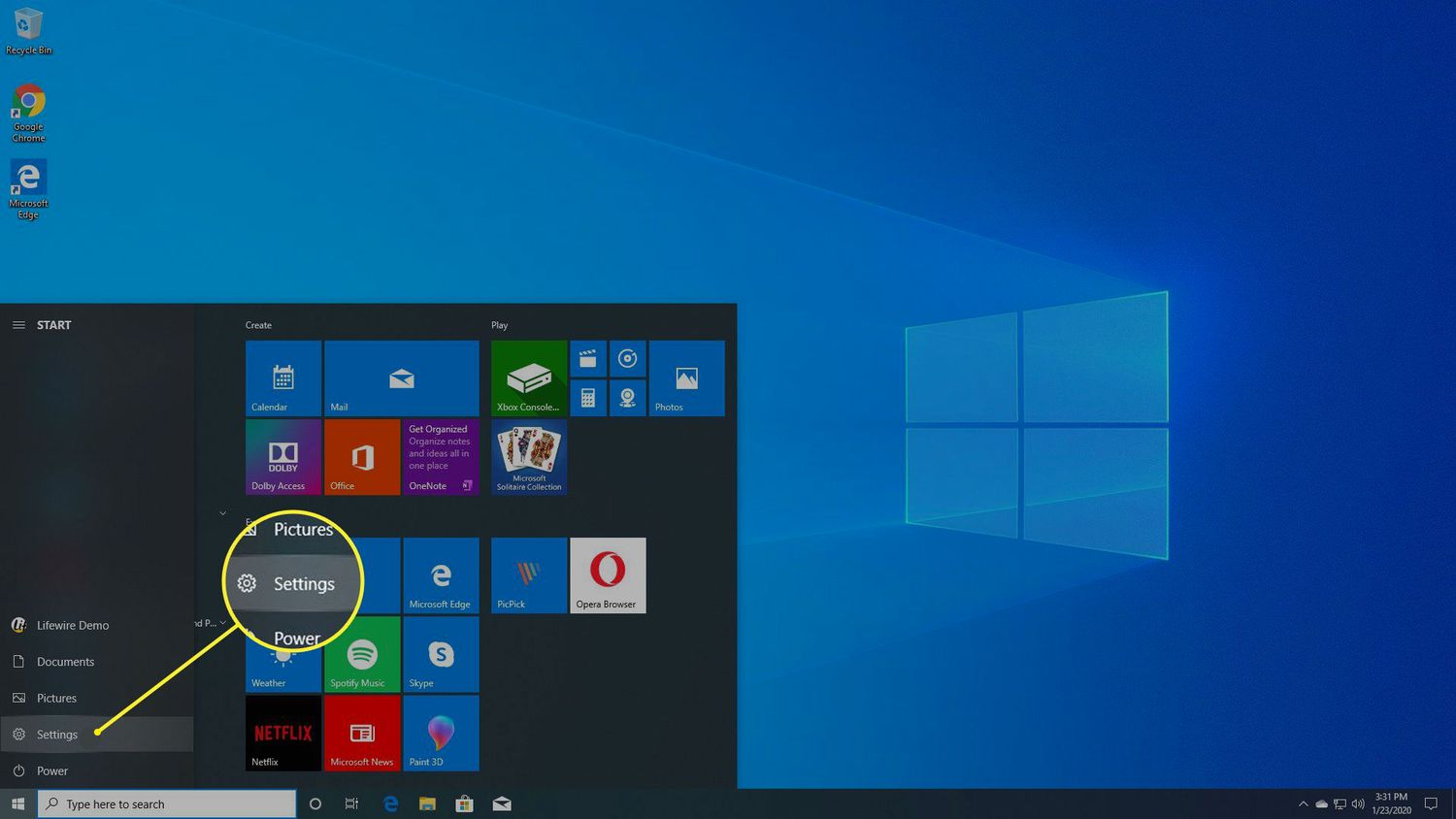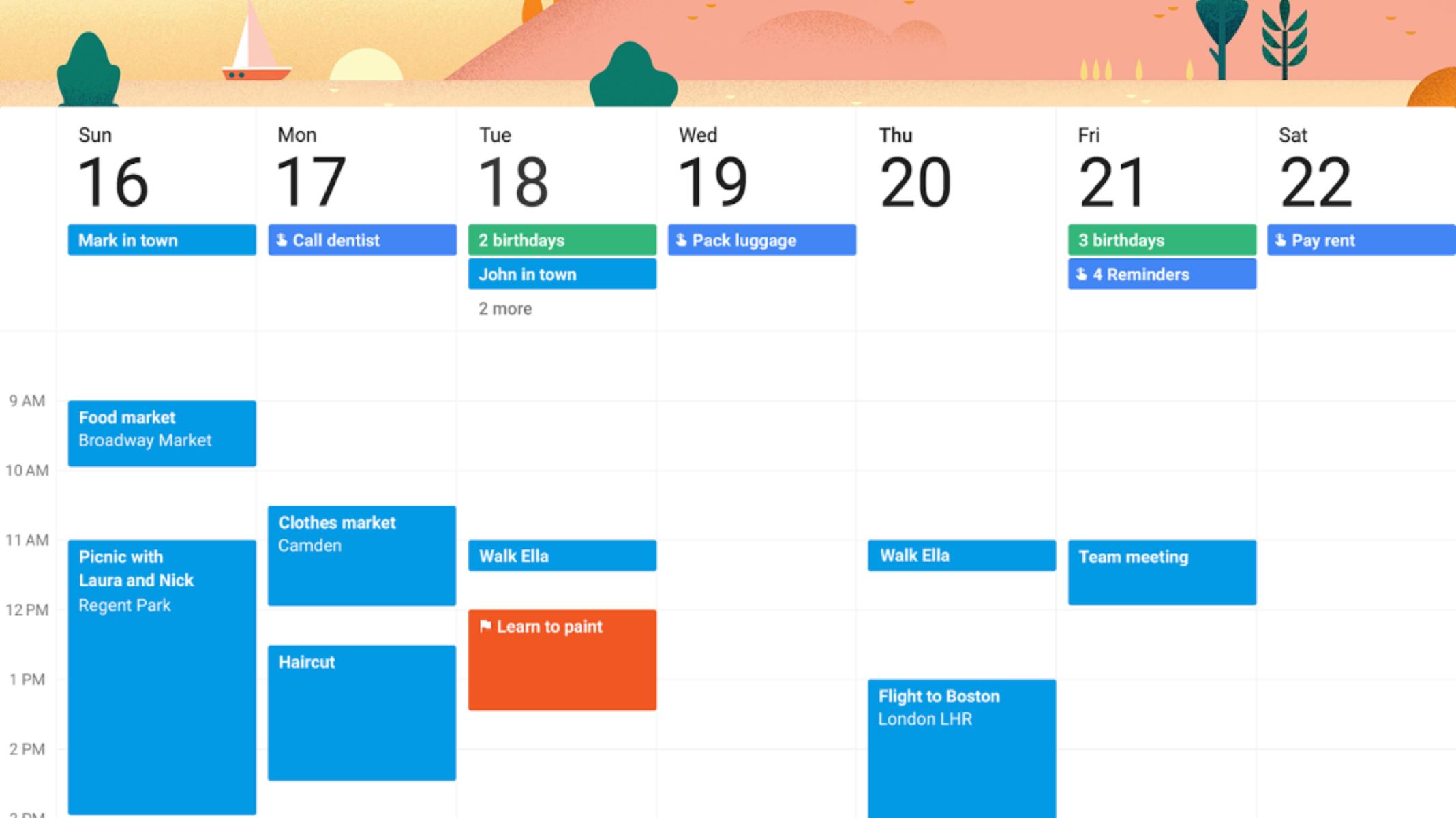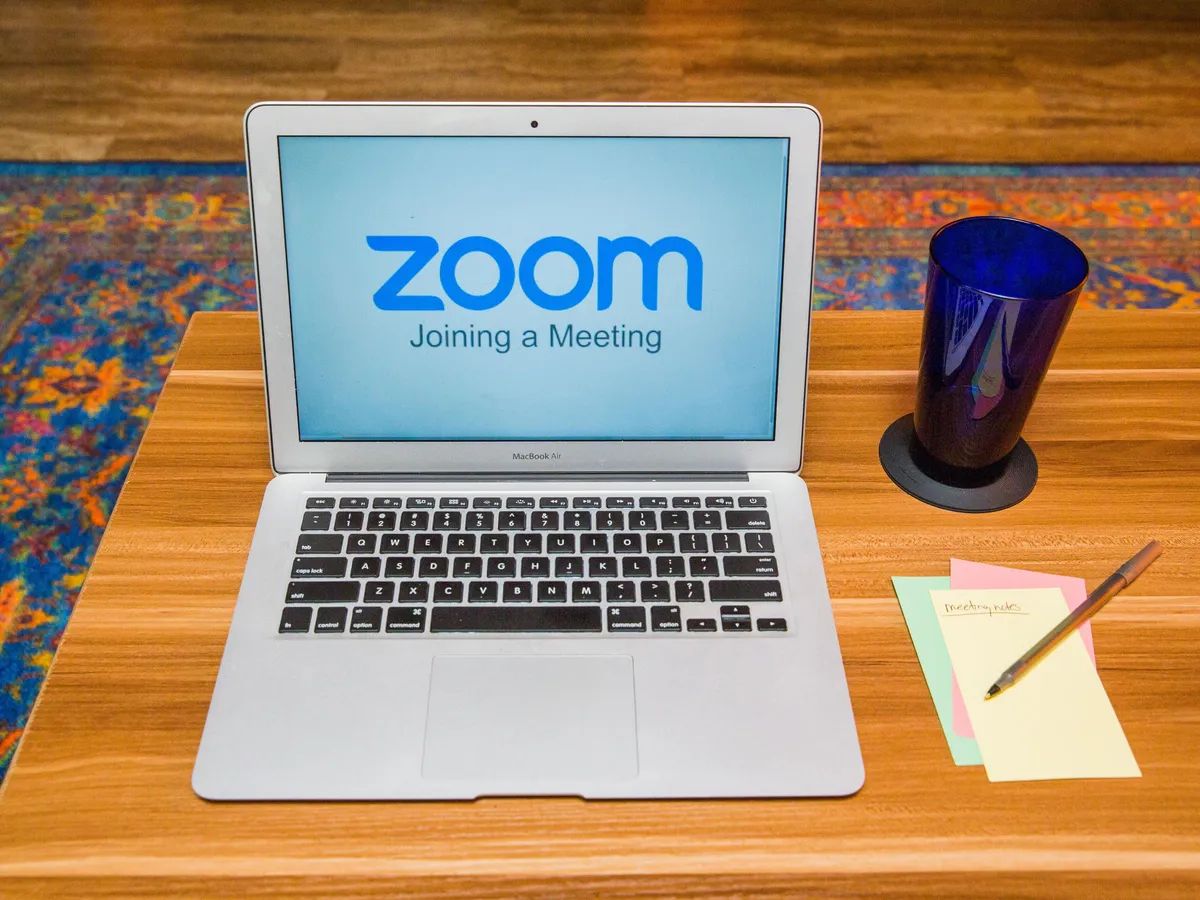Introduction
Setting Outlook to open links in Google Chrome can significantly improve your browsing experience and streamline your workflow. By default, Outlook may open links in a different web browser, but with a few simple steps, you can customize the settings to ensure that all links open directly in Google Chrome.
This customization can be particularly beneficial if you prefer using Google Chrome for its speed, security features, and seamless integration with various web applications. By making this adjustment, you can effortlessly transition from reading emails to accessing web content without any interruptions or compatibility issues.
In this guide, we will walk you through the step-by-step process of configuring Outlook to open links in Google Chrome. Whether you are a seasoned professional or a tech-savvy enthusiast, this tutorial will equip you with the knowledge to optimize your Outlook experience and harness the full potential of Google Chrome as your default web browser.
So, let's dive into the simple yet impactful adjustments that will empower you to seamlessly navigate between your emails and the web, enhancing your productivity and overall digital experience.
Step 1: Open Outlook
To begin the process of setting Outlook to open links in Google Chrome, the first step is to open the Outlook application on your computer. Outlook is a widely used email client developed by Microsoft, known for its robust features and seamless integration with other Microsoft products and services.
You can easily open Outlook by locating its icon on your desktop, taskbar, or within your list of installed applications. Simply double-click on the Outlook icon to launch the application. Alternatively, you can also search for "Outlook" in the Windows search bar and select the application from the search results to open it.
Upon opening Outlook, you will be prompted to sign in with your email address and password, granting you access to your email account and associated features. If you have multiple email accounts configured within Outlook, ensure that you are accessing the specific account for which you intend to adjust the link-opening settings.
Once you have successfully opened Outlook and accessed your email account, you are ready to proceed to the next step in the process of configuring Outlook to open links in Google Chrome. This initial step sets the stage for the subsequent actions that will enable a seamless and efficient link-opening experience within the Outlook application.
With Outlook now open and at your fingertips, you are poised to embark on the journey of customizing your link-handling preferences, ultimately enhancing your browsing experience and productivity within the Outlook environment.
Now that Outlook is open, let's move on to the next step and delve into the process of adjusting the settings to ensure that all links open directly in Google Chrome, aligning with your preferences and optimizing your digital workflow.
Step 2: Click on File
After successfully opening Outlook, the next crucial step in configuring the link-opening behavior is to access the "File" menu within the application. The "File" menu serves as a gateway to various settings and options that allow users to customize their Outlook experience, including the preferences related to handling links and web content.
To locate the "File" menu, direct your attention to the top-left corner of the Outlook window. Here, you will find a series of menu options, including "File," "Home," "Send/Receive," "Folder," and others. The "File" menu is typically positioned as the first option in this menu bar, denoted by the word "File" displayed in a prominent and easily identifiable manner.
Clicking on the "File" menu will reveal a dropdown list containing a plethora of options related to account management, settings, preferences, and more. This menu serves as a central hub for accessing essential functionalities that enable users to tailor their Outlook experience to align with their specific needs and preferences.
Upon clicking on the "File" menu, you will be presented with a comprehensive array of options, ranging from account settings and management to customization features and advanced configurations. It is within this menu that you will find the pathway to the specific settings that govern how links are handled within the Outlook application.
By navigating to the "File" menu and immersing yourself in the diverse range of options it offers, you are taking a pivotal step toward gaining control over the behavior of links within Outlook. This deliberate action sets the stage for the subsequent steps that will culminate in the seamless integration of Google Chrome as the default web browser for opening links within the Outlook environment.
With the "File" menu now at your disposal, you are poised to delve deeper into the realm of Outlook's settings and preferences, unlocking the potential to tailor the application to your unique requirements and preferences. This pivotal step lays the foundation for the forthcoming actions that will empower you to harness the full capabilities of Google Chrome within the Outlook ecosystem.
As you click on the "File" menu and immerse yourself in the myriad of options it presents, you are embarking on a journey of customization and optimization, paving the way for a more streamlined and personalized Outlook experience. This deliberate action signifies your proactive approach to shaping your digital environment in a manner that resonates with your preferences and enhances your overall productivity and efficiency.
Now that you have successfully accessed the "File" menu within Outlook, you are ready to progress to the subsequent steps that will lead you closer to the seamless integration of Google Chrome as your preferred web browser for opening links within the Outlook application.
Step 3: Select Options
After clicking on the "File" menu in Outlook, the next pivotal step in the process of configuring link-handling preferences is to select the "Options" menu. The "Options" menu serves as a gateway to a myriad of customizable settings and preferences that empower users to tailor their Outlook experience to align with their unique requirements and workflow.
Upon clicking on the "File" menu, a dropdown list of options will be displayed, and among these options, you will find "Options" listed toward the bottom of the menu. The "Options" menu is strategically positioned to provide users with direct access to a comprehensive range of configurations, spanning from general settings to advanced customization features.
By selecting the "Options" menu, you are embarking on a journey of customization and optimization, delving into the heart of Outlook's settings and preferences. This deliberate action signifies your proactive approach to shaping your digital environment in a manner that resonates with your preferences and enhances your overall productivity and efficiency.
Upon selecting the "Options" menu, a new window or dialog box will emerge, presenting you with a wealth of customization options and preferences. This interface serves as a centralized hub for fine-tuning various aspects of the Outlook application, allowing you to exert control over how the software behaves and interacts with external elements, such as web links.
Within the "Options" window, you will encounter a series of tabs or categories, each housing a distinct set of settings related to different facets of the Outlook experience. These tabs may include "Mail," "Calendar," "People," "Tasks," "Search," "Advanced," and more, each offering a unique array of configurations that cater to specific functionalities and user preferences.
As you navigate through the tabs within the "Options" window, you are presented with the opportunity to explore and modify a wide spectrum of settings, ranging from email display preferences to security options and integration settings. This immersive experience empowers you to sculpt Outlook into a personalized and finely tuned tool that seamlessly aligns with your workflow and communication needs.
With the "Options" window now at your disposal, you are poised to delve deeper into the realm of Outlook's settings and preferences, unlocking the potential to tailor the application to your unique requirements and preferences. This pivotal step lays the foundation for the forthcoming actions that will empower you to harness the full capabilities of Google Chrome within the Outlook ecosystem.
Now that you have successfully accessed the "Options" menu within Outlook, you are ready to progress to the subsequent steps that will lead you closer to the seamless integration of Google Chrome as your preferred web browser for opening links within the Outlook application.
Step 4: Click on Advanced
Upon selecting the "Options" menu within Outlook, the next crucial step in the process of configuring link-handling preferences is to navigate to the "Advanced" tab. The "Advanced" tab serves as a gateway to a myriad of intricate settings and configurations that enable users to exert precise control over various aspects of the Outlook application.
By clicking on the "Advanced" tab within the "Options" window, you are embarking on a journey of exploration and fine-tuning, delving into the depths of Outlook's advanced settings and preferences. This deliberate action signifies your proactive approach to shaping your digital environment in a manner that resonates with your preferences and enhances your overall productivity and efficiency.
Upon accessing the "Advanced" tab, you will be presented with a comprehensive array of nuanced settings that govern the intricate behaviors and functionalities within Outlook. This section serves as a treasure trove of customization options, allowing you to tailor the application to align with your specific requirements and workflow.
Within the "Advanced" tab, you will encounter a diverse range of settings, spanning from mailbox behaviors and performance optimizations to Outlook add-in management and data file settings. This expansive array of configurations empowers you to delve into the minutiae of Outlook's functionality, enabling you to fine-tune the application to suit your unique needs and preferences.
One of the key aspects within the "Advanced" tab is the ability to customize the default web browser for opening links within Outlook. This pivotal setting directly influences the seamless integration of Google Chrome as the preferred web browser for handling links, ensuring a cohesive and uninterrupted browsing experience within the Outlook environment.
By navigating to the "Advanced" tab and immersing yourself in the intricate settings it offers, you are taking a pivotal step toward gaining precise control over the behavior of links within Outlook. This deliberate action sets the stage for the subsequent steps that will culminate in the seamless integration of Google Chrome as the default web browser for opening links within the Outlook application.
With the "Advanced" tab now at your disposal, you are poised to delve deeper into the realm of Outlook's advanced settings and preferences, unlocking the potential to tailor the application to your unique requirements and preferences. This pivotal step lays the foundation for the forthcoming actions that will empower you to harness the full capabilities of Google Chrome within the Outlook ecosystem.
Now that you have successfully accessed the "Advanced" tab within Outlook, you are ready to progress to the subsequent steps that will lead you closer to the seamless integration of Google Chrome as your preferred web browser for opening links within the Outlook application.
Step 5: Scroll down to the "Other" section
As you navigate through the intricate settings within the "Advanced" tab of the Outlook Options window, the next crucial step involves scrolling down to the "Other" section. This pivotal maneuver directs your focus to a specific segment of the settings interface where essential configurations related to link handling and web browser integration are housed.
Upon reaching the "Other" section, you are presented with a subset of settings that encompass diverse functionalities and preferences, each contributing to the holistic customization of the Outlook experience. This section serves as a gateway to pivotal adjustments that directly influence how links are handled within the application, laying the groundwork for a seamless and tailored browsing experience.
Within the "Other" section, you will encounter a range of nuanced settings that extend beyond the conventional configurations, delving into the intricacies of link behavior and web browser integration. These settings are strategically positioned to provide users with precise control over the interaction between Outlook and external web content, ensuring a cohesive and uninterrupted browsing experience.
As you scroll through the "Other" section, you will encounter specific options related to web browser integration, default behaviors for handling web content, and link-opening preferences. These options are designed to empower users to align Outlook with their preferred web browser, seamlessly integrating it into their digital workflow and enhancing overall productivity.
The deliberate action of scrolling down to the "Other" section signifies your proactive approach to customizing the link-handling preferences within Outlook, reflecting a keen desire to tailor the application to align with your unique requirements and browsing habits. This deliberate maneuver sets the stage for the subsequent steps that will culminate in the seamless integration of Google Chrome as the default web browser for opening links within the Outlook application.
With the "Other" section now within your purview, you are poised to delve deeper into the realm of nuanced settings and preferences, unlocking the potential to tailor the application to your unique requirements and preferences. This pivotal step lays the foundation for the forthcoming actions that will empower you to harness the full capabilities of Google Chrome within the Outlook ecosystem.
Now that you have successfully navigated to the "Other" section within Outlook, you are ready to progress to the subsequent steps that will lead you closer to the seamless integration of Google Chrome as your preferred web browser for opening links within the Outlook application.
Step 6: Click on the "Web Browser" dropdown menu
Upon reaching the "Other" section within the Advanced tab of the Outlook Options window, the next pivotal step involves clicking on the "Web Browser" dropdown menu. This action serves as a gateway to a crucial setting that directly influences the default web browser used for opening links within the Outlook application.
As you click on the "Web Browser" dropdown menu, a list of available web browsers installed on your computer will be presented, offering you the opportunity to select your preferred browser for seamlessly opening links from within Outlook. This intuitive interface empowers you to exert precise control over the link-handling behavior, aligning it with your browsing preferences and workflow.
The "Web Browser" dropdown menu encapsulates the essence of customization, allowing you to tailor the interaction between Outlook and your preferred web browser. By selecting Google Chrome from the dropdown menu, you are effectively signaling your preference for a cohesive and uninterrupted browsing experience, seamlessly integrating Google Chrome into the fabric of your digital workflow.
This deliberate action signifies your proactive approach to shaping your digital environment in a manner that resonates with your preferences and enhances your overall productivity and efficiency. By choosing Google Chrome as your default web browser within Outlook, you are embracing a seamless transition from reading emails to accessing web content, all within a familiar and optimized browsing environment.
The intuitive nature of the "Web Browser" dropdown menu streamlines the process of customizing link-handling preferences, ensuring that your chosen web browser seamlessly integrates with Outlook, thereby enhancing your browsing experience and overall digital workflow. This deliberate maneuver sets the stage for a cohesive and tailored interaction between Outlook and Google Chrome, aligning with your preferences and optimizing your browsing experience.
With the "Web Browser" dropdown menu now at your disposal, you are poised to solidify the seamless integration of Google Chrome as your preferred web browser for opening links within the Outlook application. This pivotal step lays the foundation for the forthcoming actions that will empower you to harness the full capabilities of Google Chrome within the Outlook ecosystem, enhancing your productivity and digital experience.
Step 7: Select Google Chrome
After clicking on the "Web Browser" dropdown menu within the "Other" section of the Advanced tab in the Outlook Options window, the next pivotal step involves selecting Google Chrome from the list of available web browsers. This decisive action solidifies your preference for Google Chrome as the default web browser for seamlessly opening links within the Outlook application.
As you navigate through the list of available web browsers, the familiar icon and name of Google Chrome will be prominently displayed, offering you the opportunity to align your browsing experience within Outlook with the speed, security features, and seamless integration that Google Chrome is renowned for. By selecting Google Chrome from the dropdown menu, you are effectively signaling your preference for a cohesive and uninterrupted browsing experience, seamlessly integrating Google Chrome into the fabric of your digital workflow.
The selection of Google Chrome as the default web browser within Outlook signifies a deliberate choice to optimize your browsing experience and streamline your workflow. This preference for Google Chrome reflects a conscious decision to leverage its robust features, including tab management, security enhancements, and compatibility with a wide array of web applications, ensuring a seamless transition from reading emails to accessing web content.
By choosing Google Chrome as your preferred web browser within Outlook, you are embracing a familiar and optimized browsing environment, where the transition from email communication to web exploration is seamless and uninterrupted. This deliberate action empowers you to navigate through web content with confidence, leveraging the speed and efficiency that Google Chrome offers, thereby enhancing your overall productivity and digital experience within the Outlook ecosystem.
The selection of Google Chrome as the default web browser within Outlook is a pivotal step that aligns your browsing preferences with your digital workflow, ensuring a cohesive and tailored interaction between Outlook and Google Chrome. This deliberate maneuver sets the stage for a seamless integration, where Google Chrome becomes an integral part of your email communication and web exploration, enhancing your browsing experience and overall digital workflow.
With Google Chrome now selected as your preferred web browser within Outlook, you have solidified a crucial customization that optimizes your browsing experience and seamlessly integrates Google Chrome into the fabric of your digital workflow. This pivotal step lays the foundation for a cohesive and uninterrupted browsing experience, aligning with your preferences and enhancing your overall productivity within the Outlook ecosystem.
Step 8: Click OK to save changes
After selecting Google Chrome as the default web browser within Outlook, the final and crucial step involves clicking the "OK" button to save the changes made to the link-handling preferences. This definitive action solidifies the seamless integration of Google Chrome into the fabric of your digital workflow within the Outlook application.
By clicking "OK," you are affirming the deliberate customization of link-handling preferences, ensuring that all links within Outlook seamlessly open in Google Chrome, aligning with your browsing preferences and optimizing your digital experience. This affirmative step signifies the culmination of a deliberate and proactive approach to tailoring the Outlook environment to resonate with your unique requirements and workflow.
The act of clicking "OK" serves as a pivotal moment where the customized settings are officially applied, ushering in a browsing experience that seamlessly transitions from email communication to web exploration without any interruptions or compatibility issues. This affirmative action empowers you to navigate through web content with confidence, leveraging the speed, security features, and seamless integration that Google Chrome offers, thereby enhancing your overall productivity and digital experience within the Outlook ecosystem.
As the changes are saved, the Outlook application seamlessly adopts Google Chrome as the default web browser for opening links, ensuring a cohesive and uninterrupted browsing experience that aligns with your preferences. This affirmative step solidifies the seamless integration of Google Chrome into the fabric of your digital workflow, where the transition from reading emails to accessing web content is seamless and optimized, enhancing your overall browsing experience within the Outlook environment.
By clicking "OK" to save the changes, you have effectively tailored the link-handling preferences within Outlook to align with your browsing habits and preferences, ensuring a cohesive and uninterrupted browsing experience that seamlessly integrates Google Chrome into your digital workflow. This affirmative action marks the completion of a deliberate and proactive customization, enhancing your productivity and digital experience within the Outlook ecosystem.
Conclusion
In conclusion, the process of setting Outlook to open links in Google Chrome is a pivotal customization that empowers users to seamlessly integrate their preferred web browser into the fabric of their digital workflow within the Outlook application. By following the step-by-step guide outlined in this tutorial, users can tailor their link-handling preferences to align with their browsing habits and optimize their overall digital experience.
The journey begins with opening Outlook and navigating through the "File" menu to access the "Options" window, where a wealth of customizable settings awaits. By delving into the intricacies of the "Advanced" tab and navigating to the "Other" section, users gain precise control over the interaction between Outlook and their preferred web browser. The pivotal moment arrives as users select Google Chrome from the "Web Browser" dropdown menu, affirming their preference for a cohesive and uninterrupted browsing experience.
The final act of clicking "OK" to save the changes solidifies the seamless integration of Google Chrome into the fabric of the Outlook environment, ensuring that all links open directly in Google Chrome. This affirmative step marks the culmination of a deliberate and proactive approach to tailoring the Outlook experience, enhancing productivity and digital efficiency.
By seamlessly transitioning from email communication to web exploration within a familiar and optimized browsing environment, users can navigate through web content with confidence, leveraging the speed, security features, and seamless integration that Google Chrome offers. This tailored interaction between Outlook and Google Chrome enhances the overall browsing experience, empowering users to optimize their digital workflow and productivity.
In essence, the process of setting Outlook to open links in Google Chrome is a testament to the flexibility and customization options available within the Outlook application. By aligning link-handling preferences with individual browsing habits, users can seamlessly integrate their preferred web browser, enhancing their overall digital experience and productivity within the Outlook ecosystem.







